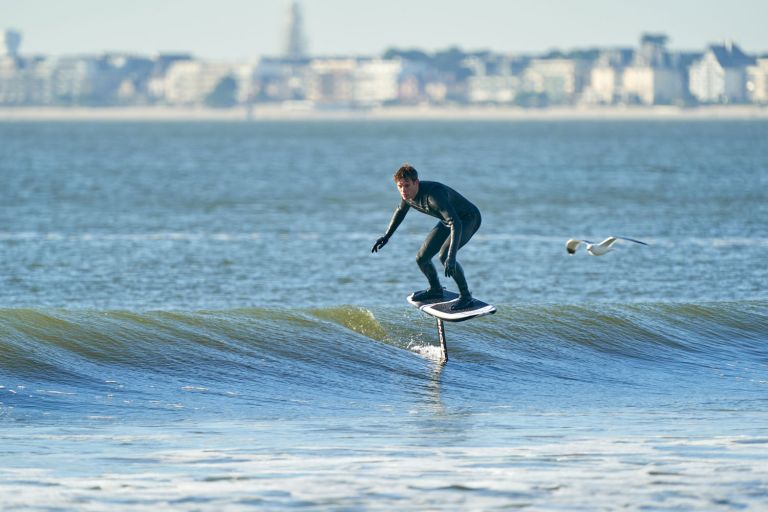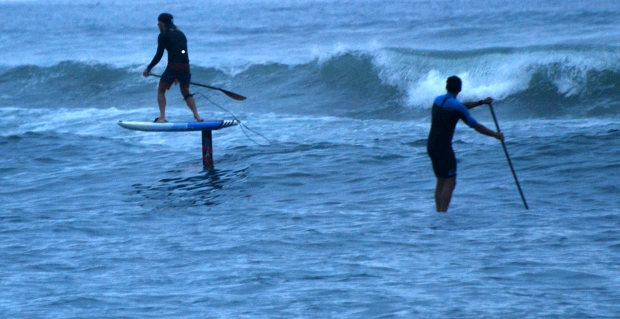In the 2000s, the surf-foil made its debut. Originally, it was only a means to soar above the sea in high swells while using surf-traction. Riders generate momentum by hammering their legs and hopping until the wave’s action drives them forward and higher. They soar as their board floats in the air, above the ocean’s surface, or in the waves. Foil surfing, also known as foil boarding, hydro foiling, or just foiling, is becoming more and more popular on beaches and across the world. However, it’s a relatively new activity that attracts curious observers who stop to check how this strange-looking apparatus works: Under the board, a wing-like foil cuts through the water, lifting the board into the air. The Surf Foil is made up of four parts: a mast, a fuselage, a front wing, and a back wing (stabilizer).
A Surfing Foil’s Composition
Foil surfing is a mix of surfing and hydrofoil technology in which a considerably longer, hydrodynamically engineered fin called a blade replaces the standard fin at the bottom of a surfboard. That blade is longer than a typical surfboard fin and features wings at the base. Longboarding or starting places are ideal for foiling since the waves must remain sticky and cresting for a long period without breaking. There will be enough opportunities for individuals to express their views on it. You want people to be able to enjoy the environment as safe as possible.
The wings raise the board out of the water as it advances, showing much of the blade as well. Due to the decreased surface area in contact with the water, surf foil glides above the surface and can make tighter turns.

What is the point of the appeal?
Foil surfing’s key selling factors are neither its additional mobility nor the novelty of gliding over the ocean. It’s the promise of being able to surf in locations where surfing is normally impossible. The same aircraft technology that lifts the board out of the water also allows the surfer to effortlessly gain enough momentum from whitewater to continue surfing in small waves or no waves at all. It’s even feasible to turn around after catching a wave and ride the board away from the shore while still standing, rather than kayaking out.
What do you require in terms of equipment?
You may attempt retrofitting a fin onto a standard surfboard by selecting one that is sufficiently buoyant and thick enough to accommodate a Tuttle box for the hydrofoil fin. You might also get a new hydrofoil board from Signature Foils, a professional board shaper. The nicest part about foil surfing is that it allows you to ride waves you never thought were surfable. The foil’s wings press down on the water, propelling the board forward, and because this can happen at speeds as low as three miles per hour, your ride gets much quicker as the friction decreases.



